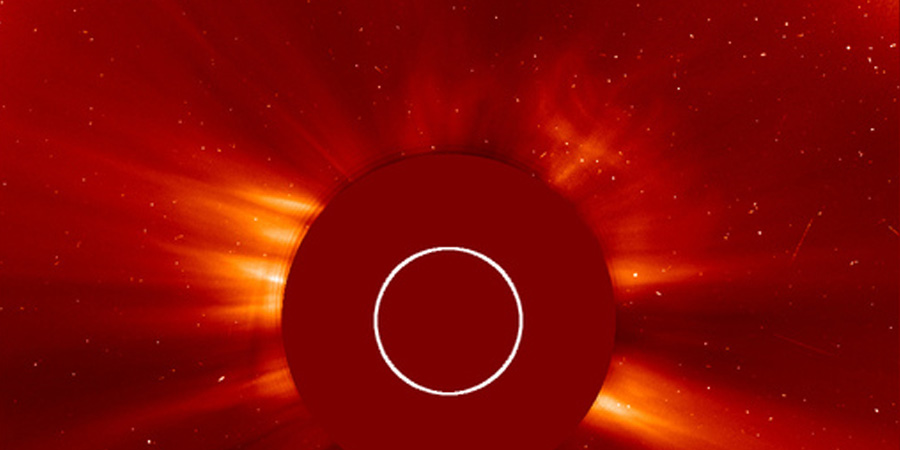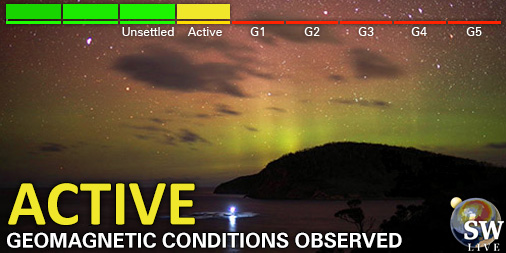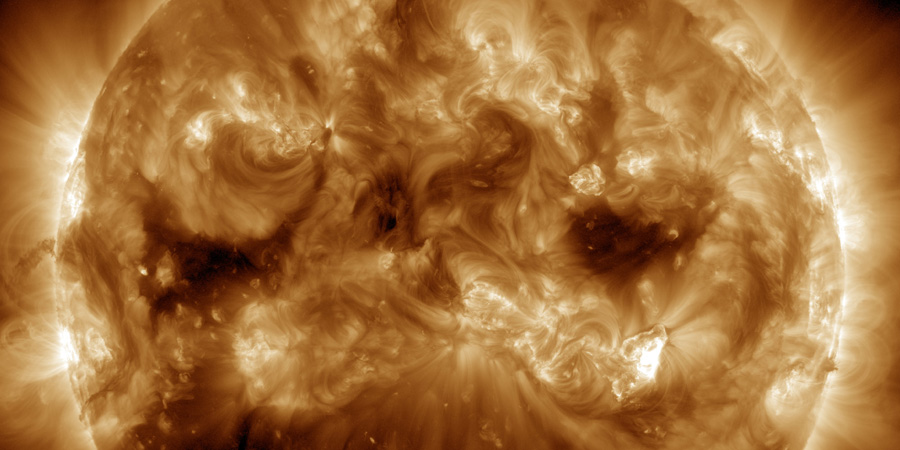Two coronal mass ejections, G3 storm watch
Tuesday, 29 March 2022 18:03 UTC

What an exciting two days we are having, sunspot regions 2978 and especially 2975 are really delivering with the latter group producing countless of C-class solar flares and even a couple of M-class solar flares. Yesterday's M4.0 solar flare of course being the strongest thus far. This M4.0 solar flare and a smaller M1 solar flare launched two coronal mass ejections into space, both of which have an earth-directed component. Sunspot region 2975 remains a very complex Beta-Gamma-Delta sunspot region which is capable of more M-class activity, and perhaps even a low X-class flare.
The NOAA SWPC has modeled (see the tweet below) both coronal mass ejections into their WSA-ENLIL solar wind model and predicts the two plasma clouds to merge into one. This is due to the fact that the second coronal mass ejection from the M1 solar flare is faster than the M4.0 coronal mass ejection that was launched just hours earlier. What this will do for the strength of the combined cloud at impact is anyone's guess. Will their combined effects disturb the interplanetary magnetic field and make it a weak impact or are we going to see a really dense cloud with favorable magnetic characteristics? We will have to wait and see but as you can see on the model run, the NOAA SWPC expects an impact just after midnight UTC on Thursday, 31 March. Do we expect a geomagnetic storm? Oh yes we do! The NOAA SWPC has just moments ago upgraded their storm watch to a strong G3 geomagnetic storm watch which equals a Kp-value of 7. If we do reach the G3 geomagnetic storm threshold, aurora might become visible from locations like southern England, the Netherlands, Wellington (New Zealand) and Denver, CO (USA).
The NOAA SWPC has modeled the two coronal mass ejections which were launched during yesterday's M-class activity. The ENLIL model predicts a combined impact (second CME is faster than the first one) just after midnight UTC on 31 March. Moderate G2 storm conditions are possible. pic.twitter.com/dnon5fqQAS
— SpaceWeatherLive (@_SpaceWeather_) March 29, 2022
Thank you for reading this article! Did you have any trouble with the technical terms used in this article? Our help section is the place to be where you can find in-depth articles, a FAQ and a list with common abbreviations. Still puzzled? Just post on our forum where we will help you the best we can!
Current data suggests there is a slight possibility for aurora to appear at the following high latitude regions in the near future
Gillam, MB, Whitehorse, YT, Yellowknife, NTFairbanks, AK, Juneau, AK, Utqiagvik, AK
Latest news
Latest forum messages
Support SpaceWeatherLive.com!
A lot of people come to SpaceWeatherLive to follow the Sun's activity or if there is aurora to be seen, but with more traffic comes higher server costs. Consider a donation if you enjoy SpaceWeatherLive so we can keep the website online!

Latest alerts
02:45 UTC - Geomagnetic activity
Active geomagnetic conditions (Kp4) Threshold Reached: 02:33 UTC
Saturday, 22 March 2025
23:45 UTC - Geomagnetic activity
Minor G1 geomagnetic storm (Kp5) Threshold Reached: 23:37 UTC
Strong G3 geomagnetic storm watch for 23 March
Yesterday around 16 UTC an M1.2 solar flare took place around sunspot region 4028. The solar flare triggered a filament eruption which erupted from the center of the earth-facing solar disk.
Read more12:18 UTC - Hemispheric Power Index
The OVATION model predicts the Hemispheric Power Index to reach 75GW at 13:10 UTC
Space weather facts
| Last X-flare | 2025/02/23 | X2.0 |
| Last M-flare | 2025/03/21 | M1.2 |
| Last geomagnetic storm | 2025/03/22 | Kp6- (G2) |
| Spotless days | |
|---|---|
| Last spotless day | 2022/06/08 |
| Monthly mean Sunspot Number | |
|---|---|
| February 2025 | 154.6 +17.6 |
| March 2025 | 140.6 -14 |
| Last 30 days | 138.7 -14.7 |





